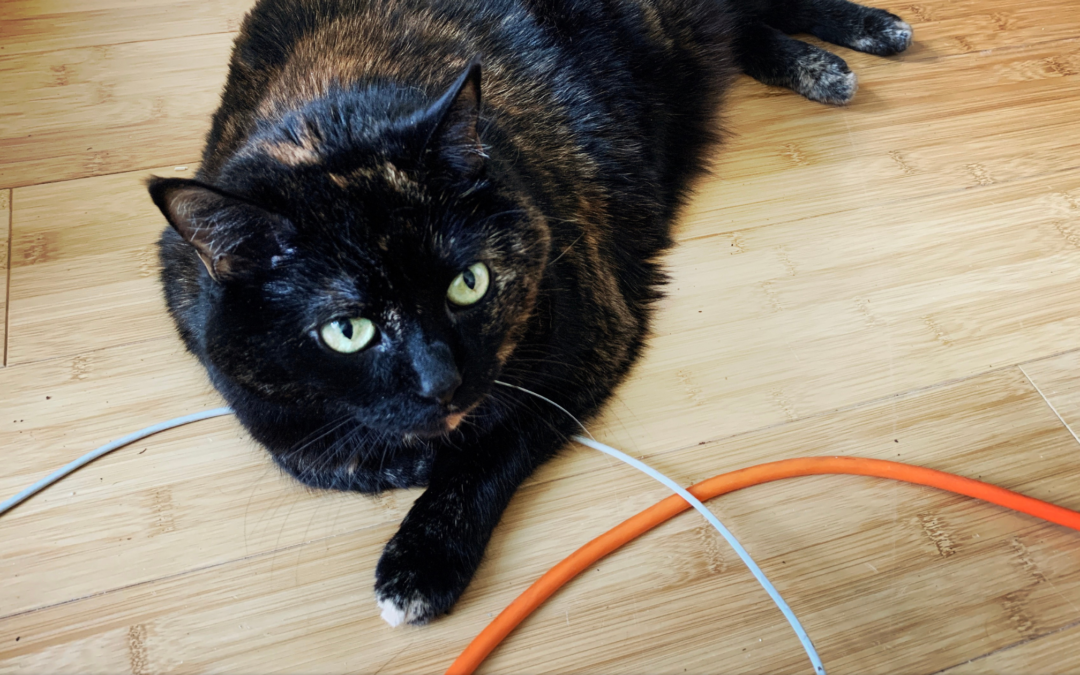A Safe Home for Kitty
Preparing to adopt a cat? Congratulations! We’ll be here to help you every step of the way. Today, let’s talk about cat-proofing your home.
Before you bring your new cat home, take some time to make sure your home is a safe place for your feline friend using these tips. Kitties are famously curious creatures, and your new cat pal will start exploring your home right away.
Cats of all ages can be curious, playful, and have the athletic skills to get into lots of spaces in your home, so it is important to follow these guidelines for any cat. However, kitten-proofing may need to be more rigorous because kittens can fit into smaller spaces, are vulnerable to toxicity at lower amounts, and are far more playful. Assume that if they can get into something, they will!
Plants
Cats may munch on houseplants, and many common household plants can be toxic them. If you have houseplants, it is crucial to find out which plants are toxic. Review this comprehensive guide to toxic and non-toxic plants. If you have plants that are dangerous to cats, consider giving them to a friend, taking them to work, or keeping them in a place that your cat can’t reach. Remember that your kitty may be quite athletic and able to climb onto tables, counters, and shelves.
Human Food
Some foods that are safe for humans are toxic to cats, but that won’t stop your curious kitty from trying to steal a bite.
Chocolate, caffeine, alcohol, xylitol (a common sweetener in candy, gum, mints, and sugar-free foods), grapes, raisins, and yeast are some of the most common offenders. Make sure that you store your food in a place that your cat can’t get to it, and do your research before giving any human food to your cat. Make sure that everyone in your household knows what foods are toxic to your kitty. It may be helpful to leave a list stuck to the refrigerator to remind everyone to be careful, especially while you’re getting used to having a new family member.
For a more comprehensive list of potential poisons, check out the ASPCA Animal Poison Control resources.
If you think your pet may have ingested a potentially poisonous substance, call the ASPCA Animal Poison Control or your local emergency vet right away. Make sure you have these emergency numbers stored in your phone.
ASPCA Animal Poison Control: (888) 426-4435
Wires, Cords, and Strings
Cats, especially kittens, might look at your power cords and phone chargers as awesome toys. Chewing power cords can cause electrocution, and tugging on a cord may cause a lamp or TV to fall over on them. Try to hide cords using cord management tools, or tuck them safely behind furniture.
You may also need to hide shoelaces, drawstrings, and even string-based toys from your cat when you aren’t supervising them. If ingested, these can cause hazardous blockages.
Hiding Spots and Escape Routes
Cats can be sneaky. They are great hiders and can fit into very small spaces. You don’t want them hiding anywhere they could get hurt or finding ways to sneak out of the house. Do a sweep of your house to make sure windows are secure and there aren’t accessible air vents, utility closets, attic crawl-spaces, or other dangerous spots that kitty might explore. If you have a really curious kitty, you may even need to invest in extra precautions like screw-in air vent covers or child-safety locks for cabinet doors.
Keep a Watchful Eye
We’ve covered some classic kitty shenanigans in this article, but every cat is unique. Your weird and wonderful feline friend may find things to play with or ingest that we haven’t even listed (I have a cat who occasionally tries to bite off and eat pieces of towels and blankets, so I can’t leave him alone with linens). You’ll need to keep an eye on your kitty, especially while you’re getting to know them, to make sure they aren’t getting into anything dangerous.
Entertain Your Kitty
A bored cat is more likely to turn to messing with household items for stress relief and entertainment. You’ll want to provide your kitty with a variety of toys, approved scratching surfaces, perches of various heights, enrichment treats and games, and maybe some catnip. A kitty with an active mind is a happy and healthy kitty!

